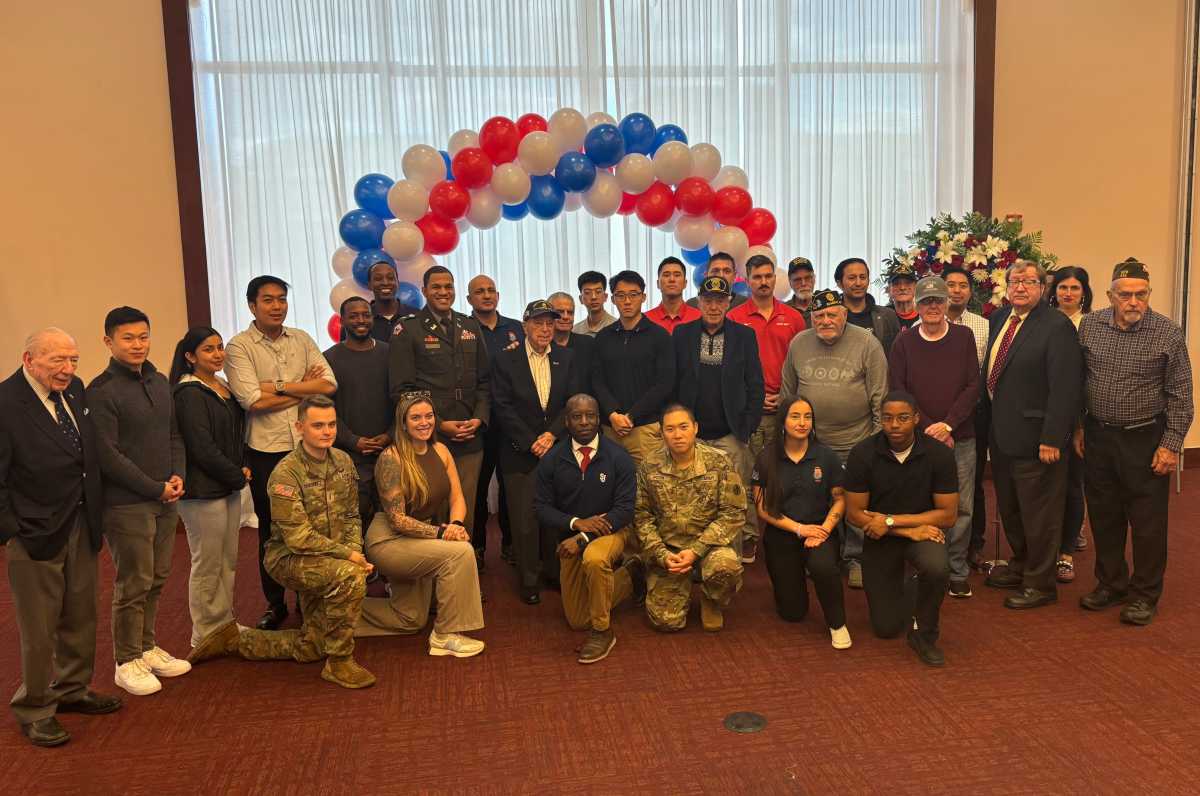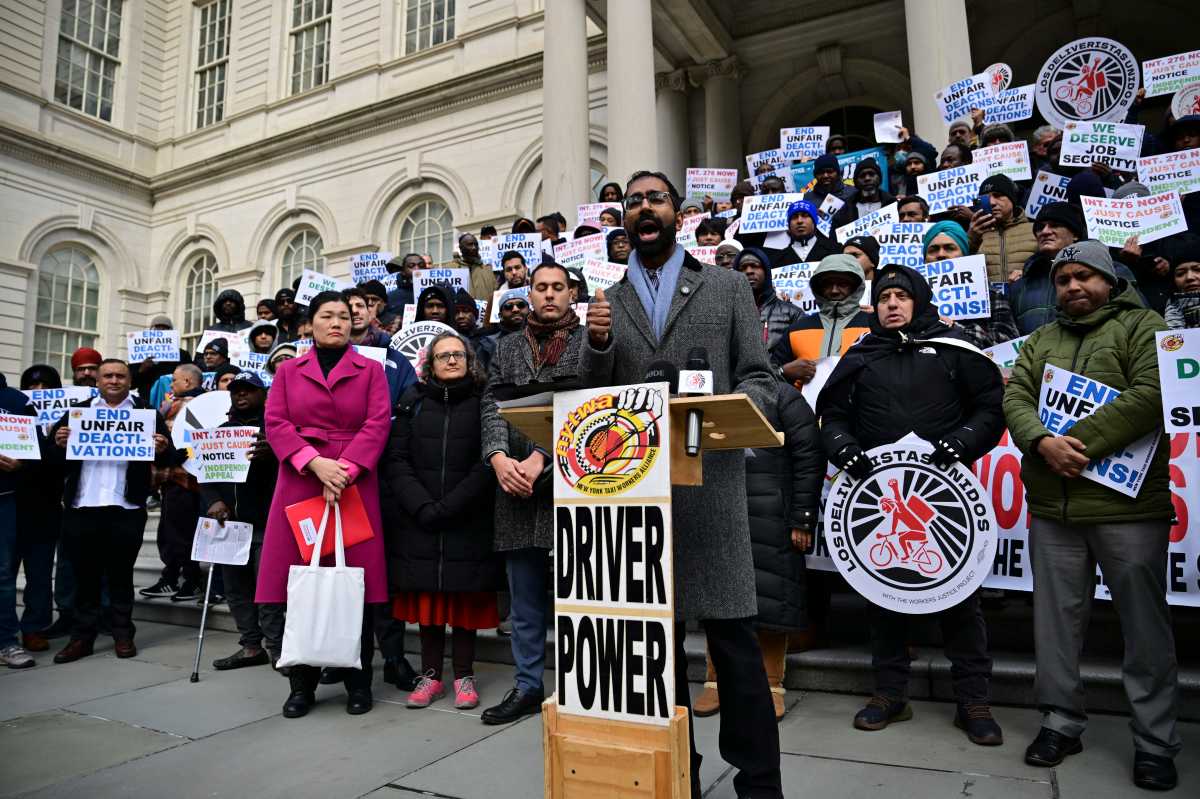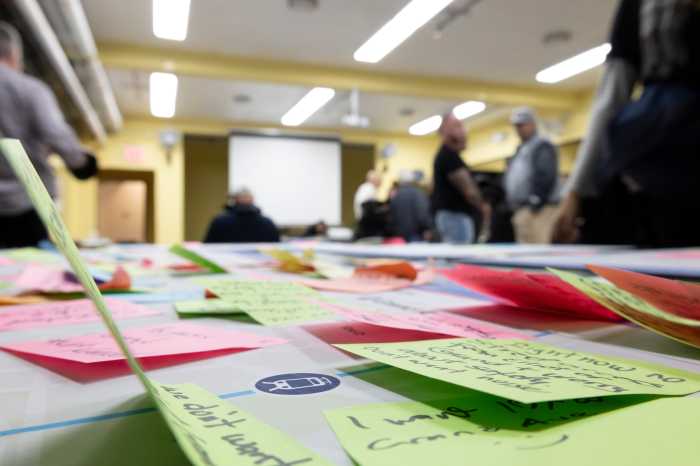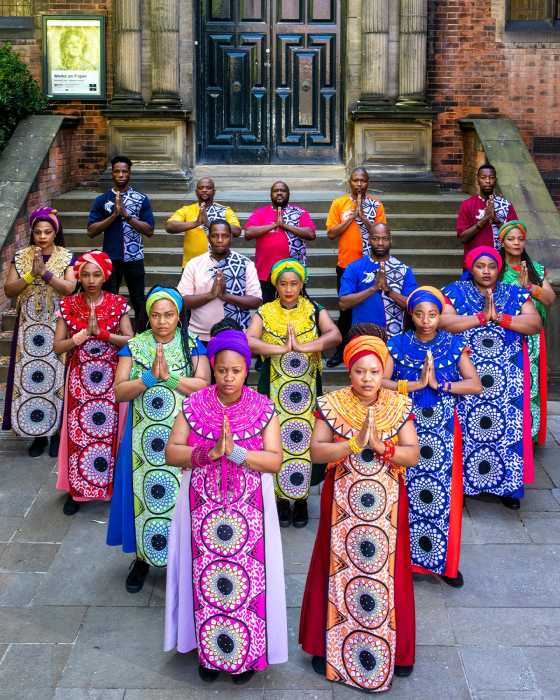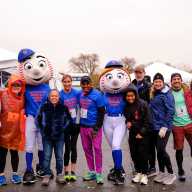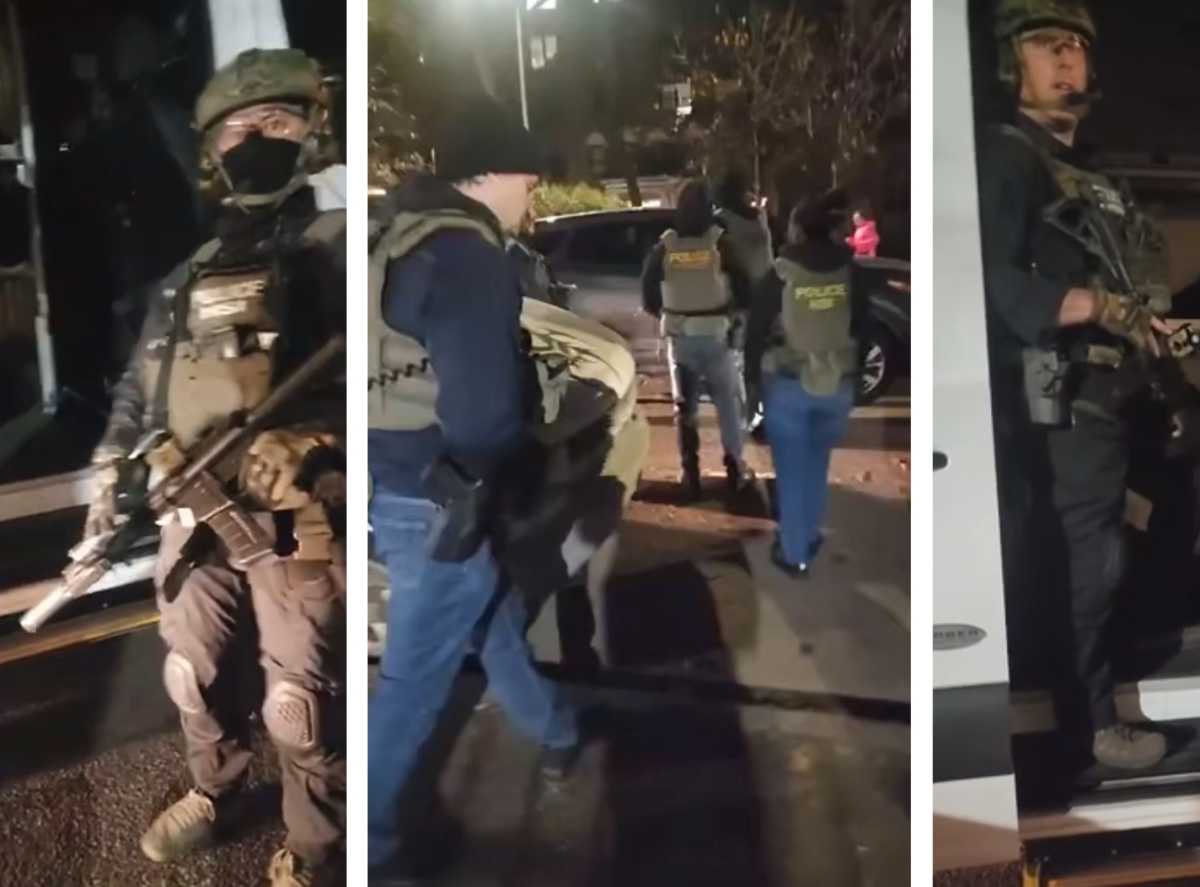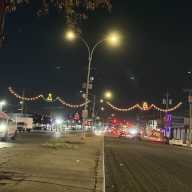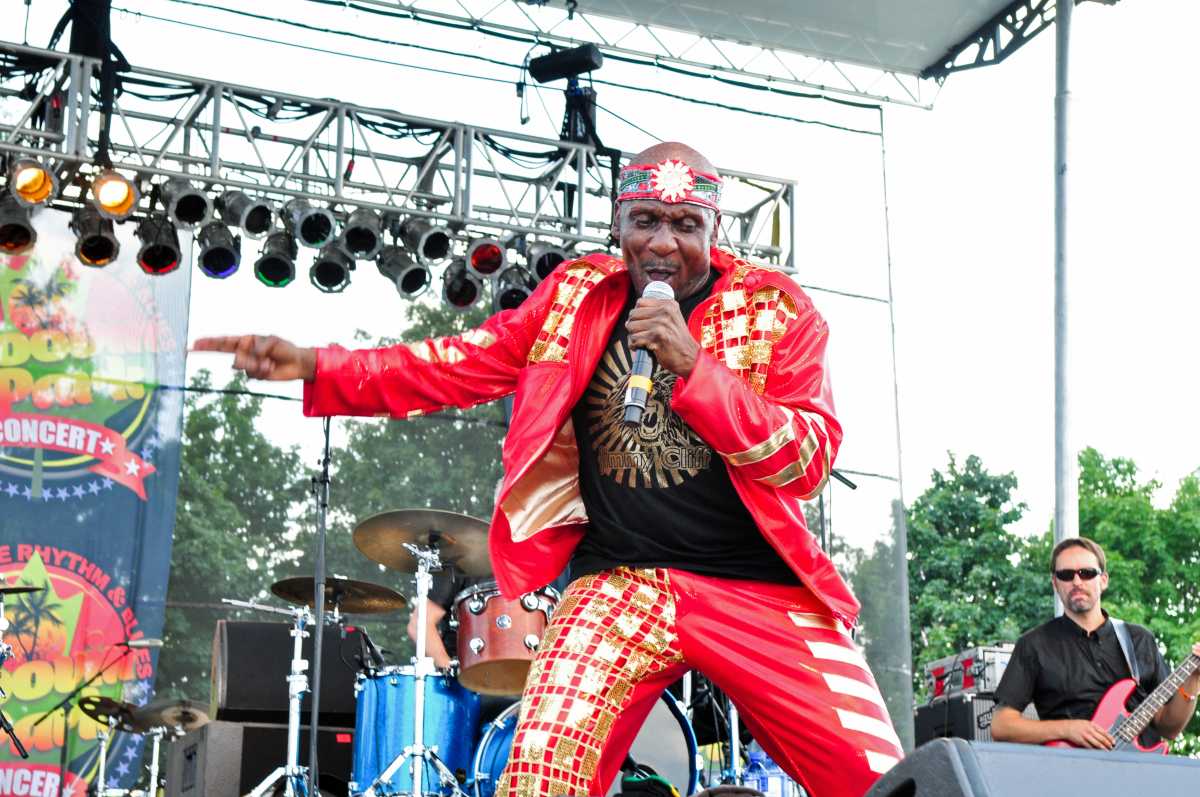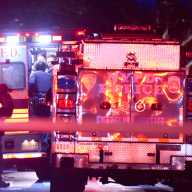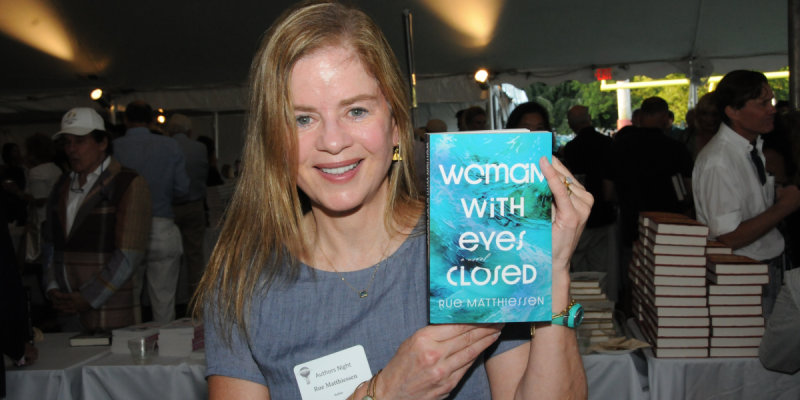Veterans attended a Veterans Day ceremony and luncheon at St. John’s University, hosted in the college’s D’Angelo Center ballroom on Nov. 6, and discussed the struggles of transitioning from military service to life back home.
Over 100 attendees, including military veterans and members of the St. John’s Student Veterans Association, many of whom received or currently receive services from the Veterans Success Center at the college, gathered in the ballroom from 1:30 to 3:30 p.m. for a lunch of sandwiches, soft drinks and a vanilla cake.
St. John’s, which participates in the Yellow-Ribbon Program that helps veterans pay for tuition not covered by the Post-9/11 GI Bill, created the Veterans Success Center in order to help veterans bridge the gap between their military service and higher education.
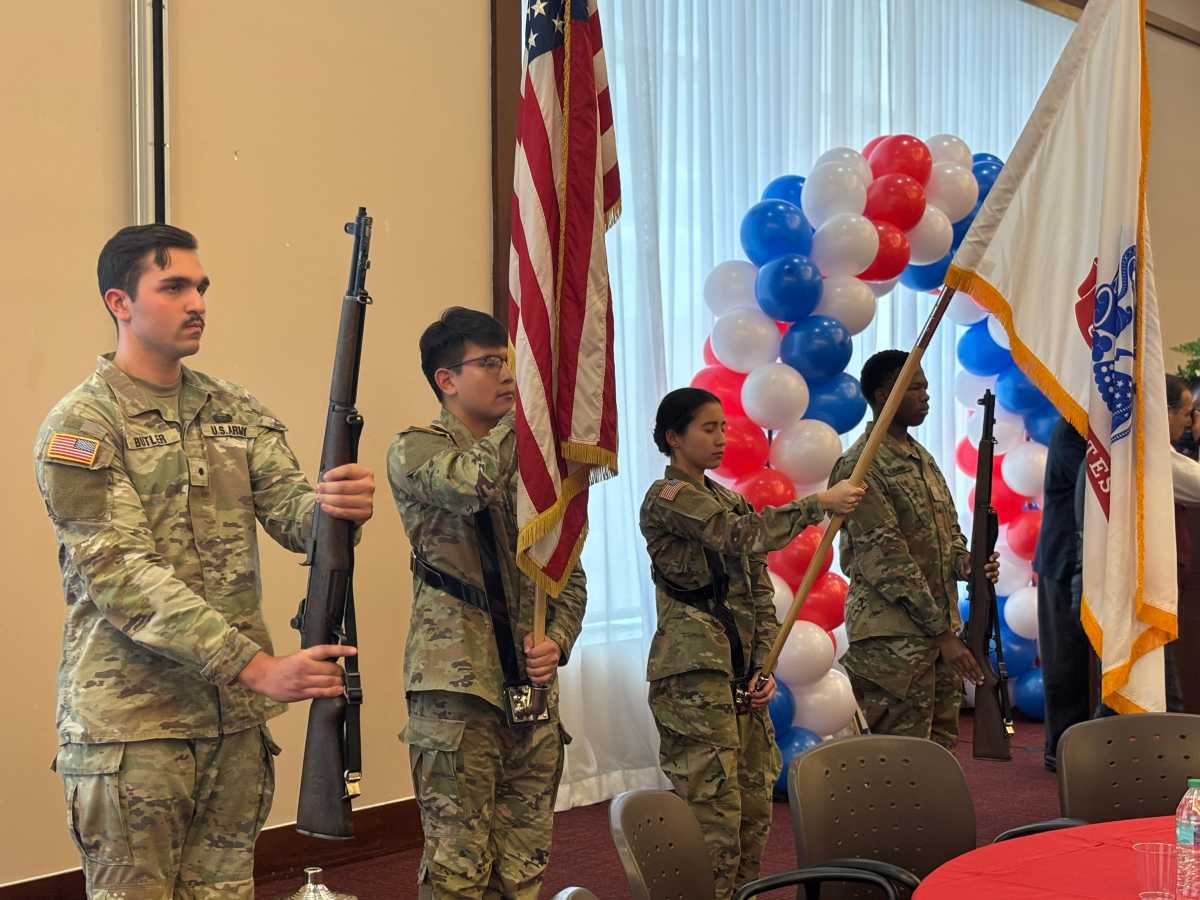
Sey Schwartz, a 99-year-old WWII veteran who was drafted to the army and deployed to Iwo Jima and Okinawa — both Japanese battle sites in the Pacific Theater that took place in 1945 — spoke at the luncheon and shared his harrowing experience in the Fifth Amphibious Force.
“I can tell you in Okinawa, the butchery was out of this world,” Schwartz said. “I don’t know of anyone that wanted to talk about their experience — unless they were stuck wounded in either their heart or their mind.”
While many of his colleagues struggled after returning home, Schwartz said he was lucky because he was able to return to his parents’ home and continue his education at the Cooper Union. After working some time in advertising, he later returned to New York University for graduate studies and became a pharmaceutical industry executive.
However, Schwartz explained that many other men returning from war had families to support and could barely survive on the wages they earned while serving. Nonetheless, many veterans made an attempt to readjust to society.
“The guys said, ‘You got to go on with life,’” Schwartz recounted. “So, they married even if they didn’t have $10 in their pockets. But what counted was rebuilding their lives and getting started.”
Schwartz said despite the “horror show” he witnessed during his service, and the many veterans who returned home with missing appendages, there were not enough services for veterans who fought in what he, and many others, consider to be the “last just war.”
According to a brief from NYC’s Coalition for the Homeless, homelessness rose significantly after WWII, along with cases of post-traumatic stress disorder, substance abuse disorders and disabilities. The coalition wrote that the GI Bill — which provided education, unemployment and career training resources — helped mitigate these challenges suffered by veterans.
Schwartz emphasized that there is no comparison between veterans who returned from WWII and veterans who returned from the wars in Afghanistan and Iraq, who benefitted from the Post-9/11 GI Bill, because the death toll of the former towers over the latter. U.S. News and World Report states over 400,000 U.S. military deaths were recorded during WWII compared to around 7,000 U.S. military deaths in Afghanistan and Iraq combined.
But, he noted that he returned to different economic factors than his modern counterparts that made it easier for him and others to enter certain industries, such as commerce, due to high demand. Nonetheless, he said today’s veterans have much better access to resources that connect them with education and job opportunities.
“I’d say that more is very noticeably being done for current veterans,” Schwartz said. “It’s a step in the right direction in order to prepare young people for a better life.”
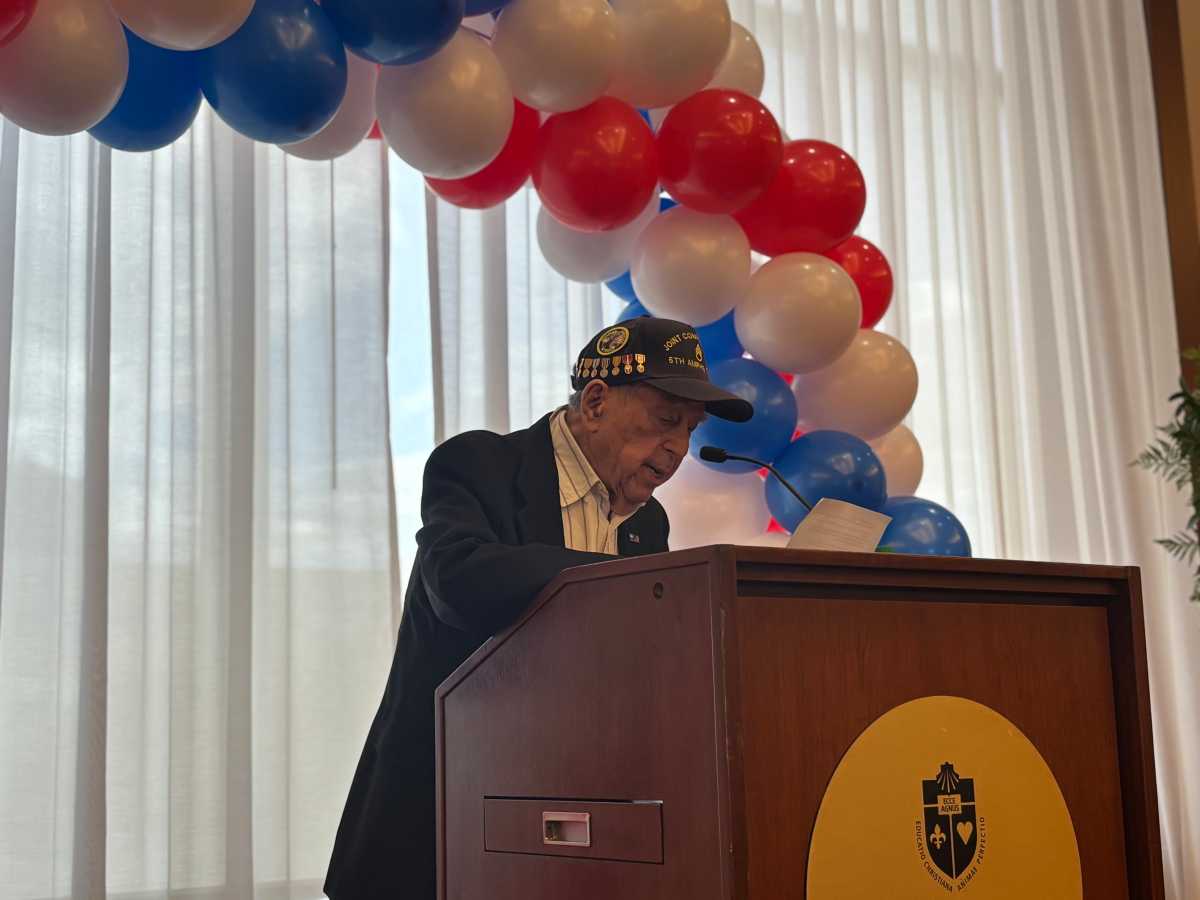
According to Karen Simons, the director of the Veterans Success Center at St. John’s, preparing veteran-status students for a brighter future is precisely the purpose of the program.
“It’s their home away from home,” Simons said. “When they’re in the center, they can connect with other veterans from any other branches.”
Currently, she said, the program serves around 120 veteran students, about 2/3 of which are graduate and 1/3 undergraduate. Many students in the graduate program attend classes in the evenings or online because they have families and full time jobs.
“The veterans don’t necessarily identify with 18- and 19-year-olds,” Simons noted. “I mean, they’ve seen things some of us don’t ever want to see or ever want to know about. So, in the center, it’s kind of their oasis where they can meet others, identify with them, connect with them, talk about their veterans benefits… It’s just a chance and an opportunity.”
Not only do veterans have tuition not covered by the Veterans Association matched by St. John’s, but they are eligible for Basic Allowance for Housing. BAH, outlined by the GI Bill, is a tax-free allowance given to veterans to help cover housing costs. While exact allowances depend upon rank, location and dependency status, the 2025 rates for New York City range from $4,197 to over $6,700.
Veterans attending the school are also given an orientation at the beginning of the school year, Simons continued, that includes presentations from offices at the college such as counseling, disability services, transfers, admissions and academics. These presentations are intended to inform these students that there are a wide variety of resources available to them and can request help connecting with people and resources if needed.
“They’ve put their life on the line,” Simons said. “It’s just wonderful that St. John’s supports the veteran community.”
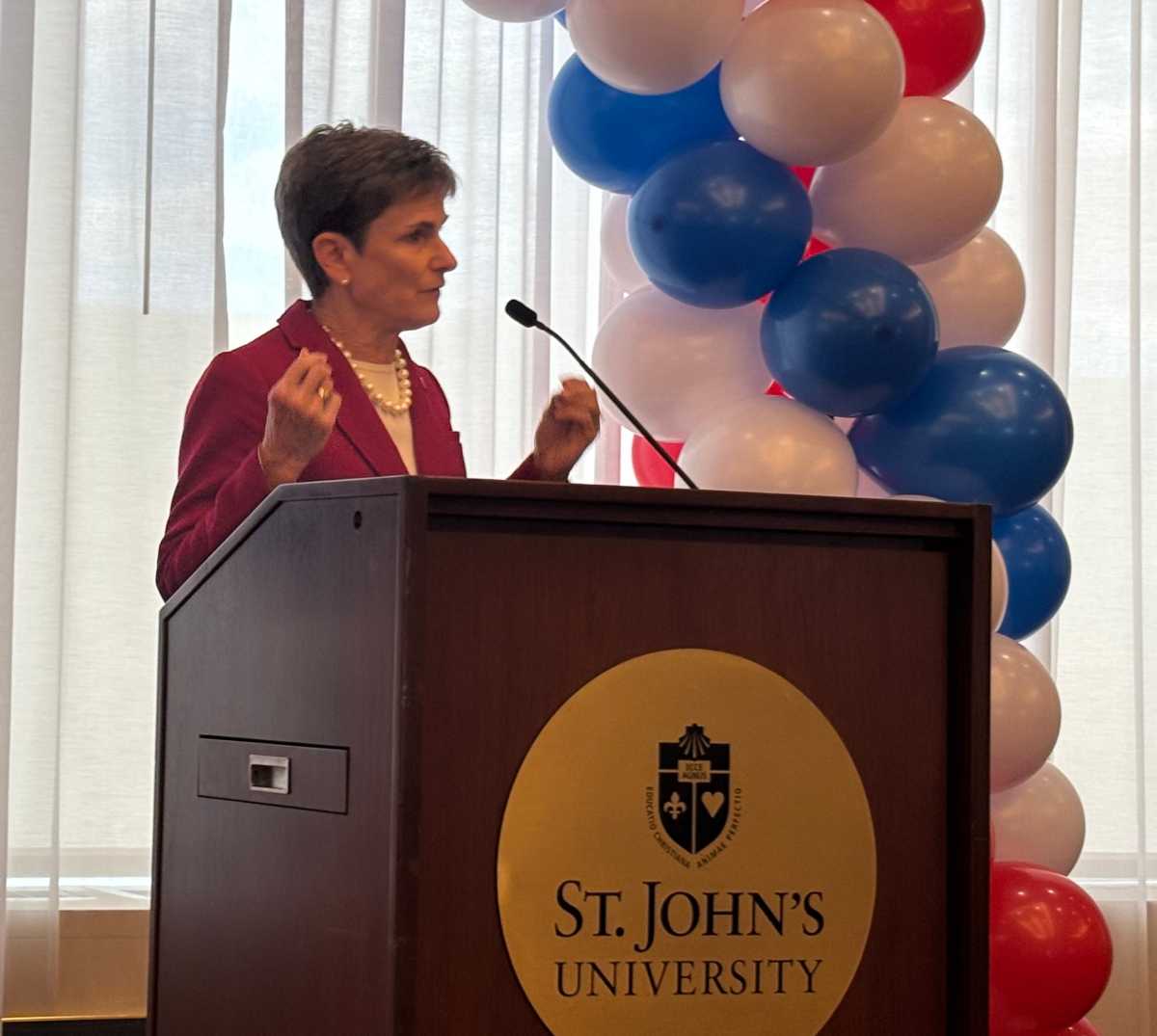
Catherine Dragon, a St. John’s government and politics graduate student who utilizes the Veterans Success Center, said her experience in the program has been helpful in smoothing her transition from military service to life back in Queens. While she is still currently serving in the U.S. Air Force Reserve, and not yet a veteran, the center helped her connect with people who have a lot in common with her through their experience in the military.
“It’s a very easy way to build community,” Dragon said. “Being able to go to the center and meet people who have the same experience is very comforting. You’re able to encourage each other.”
Dragon, 22, said she joined the military at age 17 because she felt confused and didn’t know what to do after graduating high school. She said she felt she needed discipline and order, and she wanted to experience more beyond what she described as her “sheltered” life. “It was like a way to gain a sense of independence,” she said.

While she got what she was looking for out of her military service, she explained that the transition to full-time education was difficult and required a “different type of discipline.” Dragon said she’s accustomed to working constantly and being told what to do by her superiors, so it’s hard for her to balance homework and deadlines without someone else holding her to it.
“Everybody knows mental health in the military is not great,” Dragon said. “Being detached from something you’re so used to and has been your life for so long, and then having to transition to something that’s the complete opposite — that’s hard not having people around you that can relate.”
The Veterans Success Center became a place for her to meet other veterans who understand what it’s like to need that guidance and support.
And, she emphasized, these support services help improve outcomes for veterans readjusting to society as a whole.
“Having programs that support veterans, furthering their education after leaving the military — that prevents homelessness, it socializes veterans, and it basically builds their mental health,” Dragon said.
According to the U.S. Department of Housing and Urban Development’s Point-in-Time report, an estimated 32,882 veterans were experiencing homelessness on a single night in January 2024.
Anthony Lemma, director of community relations at the Office of Assemblyman David Weprin, said his brother served in the Navy and knows firsthand how difficult it is for families to cope with the struggles of military service. He said support for veterans is essential.
“No veteran should be homeless, no veteran should be hungry, no veteran should be without health insurance,” he said.


